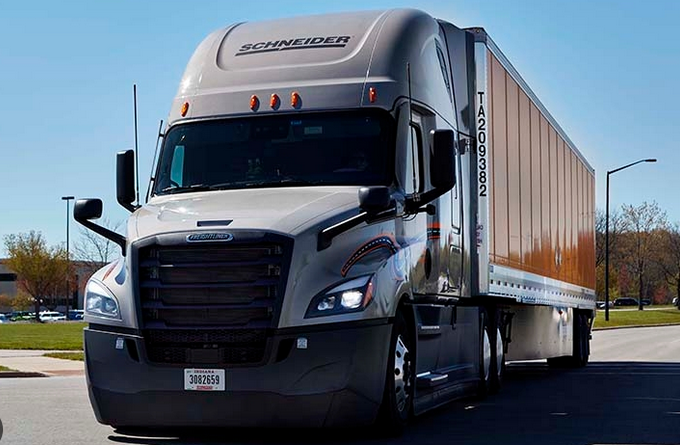A truck scan tool is a handheld device that connects to your truck’s onboard computer system via a diagnostic port. Once clicked, it communicates with the computer and retrieves valuable data about the truck’s performance and any underlying issues. This data is then translated into error codes and descriptions, clearly showing what’s wrong with the vehicle.
Truck scan tools are essential for diagnosing issues because they provide precise and reliable information. Instead of relying on guesswork or intuition, you can have access to concrete data that points you in the right direction. This saves time and money and ensures the correct repairs are made the first time.
Whether you’re dealing with engine problems, transmission issues, or electrical glitches, the scan tool will provide you with detailed error codes and descriptions – making it easier to pinpoint the root cause of the problem. With this knowledge, you can confidently do a DIY repair or seek professional help with the correct information.

Common truck issues diagnosed with scan tools
Trucks, like any other vehicle, are prone to various subjects. From engine problems to transmission failures, these issues can be frustrating and costly. However, with a truck scan tool, you can quickly and accurately diagnose many common truck issues.
One of the most common issues that truck owners face is engine misfires. A misfire occurs when one or more cylinders fail to ignite correctly, losing power and fuel efficiency. With a truck scan tool, you can identify the specific cylinder(s) that are misfiring and take appropriate action to rectify the problem.
Another common issue is transmission problems. Whether it’s a slipping clutch or a faulty sensor, transmission issues can be challenging to diagnose without the help of a scan tool. By connecting the scan tool to your truck’s computer system, you can retrieve error codes related to the transmission and gain valuable insights into the root cause of the problem.
Electrical glitches are also common in trucks. Electrical issues can be frustrating to diagnose and repair, from faulty wiring to malfunctioning sensors. However, with a truck scan tool, you can quickly identify the specific electrical component causing the problem and take the necessary steps to fix it.

Benefits of using truck scan tools
Using a truck scan tool for diagnostics offers numerous benefits for truck owners and mechanics. Let’s take a look at some of the key advantages:
1. Time-saving: By quickly identifying the root cause of the problem, a truck scan tool can save you valuable time that would otherwise be spent on manual troubleshooting and guesswork.
2. Cost-effective: With a truck scan tool, you can avoid unnecessary repairs and only focus on the actual issues. This helps you save money by minimising the need for trial-and-error repairs.
3. Accuracy: Truck scan tools provide precise and reliable data, eliminating the need for guesswork. This ensures that the correct repairs are made first, reducing the chances of further damage or recurring issues.
4. Improved efficiency: By accurately diagnosing issues, truck scan tools allow for more efficient repairs. Mechanics can quickly identify the problem and take appropriate action, minimising downtime and maximising productivity.
5. Empowerment: With a truck scan tool, truck owners and mechanics can access valuable diagnostic information previously only available to dealerships. This empowers individuals to take control of their truck’s performance and make informed repair decisions.
Types of truck scan tools available in the market
Truck scan tools come in various shapes and sizes, offering different features and capabilities. Here are some of the most common types of truck scan tools available in the market:
1. Code readers: These are basic scan tools that read and display error codes. They provide a simple and cost-effective solution for diagnosing common issues.
2. Professional diagnostic scanners: These scan tools offer many features, including live data streaming, graphing capabilities, and advanced diagnostics. They are typically used by professional mechanics and offer a more comprehensive solution for complex issues.
truck scan tools
3. Bluetooth scan tools connect to your phone or tablet via Bluetooth and provide real-time data streaming and diagnostics. They are portable and convenient, making them popular among DIY enthusiasts.
4. Wi-Fi scan tools: Similar to Bluetooth scan tools, these devices connect to your phone or tablet via Wi-Fi. They offer similar features and capabilities but may require a stable Wi-Fi connection for optimal performance.
Features to consider
Several key elements must be considered when shopping for a truck scan tool. These features can significantly impact the tool’s usability and effectiveness. Here are some of the most essential elements to look for:
1. Compatibility: Ensure the scan tool matches your truck’s make, model, and year. Some scan tools are designed to work with specific brands or vehicle types.
2. Error code database: Look for a scan tool that has a comprehensive error code database. This will make interpreting the error codes easier and finding solutions to the specific issues.
3. Live data streaming: Advanced scan tools offer live data streaming, allowing you to monitor various parameters in real time. This can be useful for troubleshooting intermittent issues or tracking the performance of specific components.
4. Software updates: Check if the scan tool offers regular updates. This ensures that you have access to the latest features and bug fixes.
5. User-friendly interface: A scan tool with a clear and intuitive interface will make the diagnostic process much smoother and more enjoyable.
A step-by-step guide to using this tool
Using a truck scan tool for diagnostics may initially seem intimidating, but it’s straightforward. Here’s a step-by-step guide to help you get started:
1. Locate the diagnostic port: The diagnostic port is typically located underneath the dashboard or near the steering column. Refer to your truck’s manual if you need help finding it.
2. Connect the scan tool: Plug the scan tool into the diagnostic port. Ensure that the connection is secure and tight.
3. Turn on the ignition: Start your truck’s engine and turn on the ignition. This will power up the truck’s onboard computer system and allow the scan tool to establish a connection.
4. Select the appropriate options: Depending on the scan tool, you may need to select your truck’s make, model, and year. Follow the on-screen instructions to navigate the menus and make the appropriate selections.
5. Retrieve diagnostic information: Once the scan tool is connected and the options are selected, you can retrieve diagnostic information from your truck’s computer system. This may include error codes, live data, and descriptions of the issues.
6. Interpret the results: Use the scan tool’s interface to interpret the results. Look for error codes and descriptions that correspond to the symptoms you’re experiencing. This will help you pinpoint the root cause of the problem.
7. Make the necessary repairs: Armed with the diagnostic information, you can now make the required repairs. Depending on the issue’s complexity, you can fix it yourself or seek professional help with the correct information.
Where can you purchase a truck scan tool?
OBD2TOOL offers a handful of diagnostic scanners and cables to preserve your RIGHT TO REPAIR.